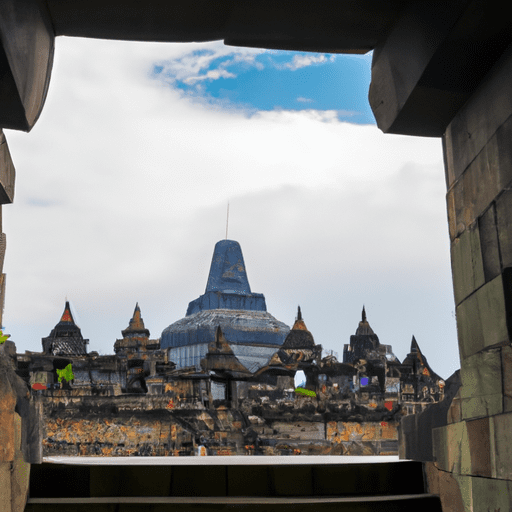Borobudur Temple is one of the greatest and most significant Buddhist monuments in the world. Located in Magelang, Central Java, Indonesia, this UNESCO World Heritage Site attracts thousands of visitors each year. According to historians, Borobudur Temple was built in the ninth century during the Sailendra dynasty’s rule. The magnificent temple was then abandoned in the 14th century and lay hidden under volcanic ash and jungle growth until its rediscovery in the 19th century.
The entrance gate of Borobudur Temple is the first monument that visitors will encounter. The gate’s architecture reflects the complex blend of cultural influences that influenced Java’s history.
The entrance is flanked by two pairs of statues known as Dvarapala. These statues are believed to protect the temple from any evil spirits or negative energies. They are the guardians of the temple and have an essential role in warding off negative influences. Each pair stands on either side of the gate, looking out to those who pass through to seek peace and spiritual enlightenment.
The entrance gate’s overall design is a beautiful blend of Hindu and Buddhist architecture. The temple’s unique design is a testament to how different religions and cultures have influenced Java’s history. The temple’s creators were inspired by traditional Buddhist architecture, but several Hindu elements were incorporated. For example, the gate is adorned with Kala-Makara, a Hindu mythical creature made up of the head of a lion and the body of a dragon. According to Hindu mythology, this creature is symbolic of destruction and creation, which represents the cycle of life.
The gate’s bas-reliefs are another impressive feature that provides visitors with a glimpse into Java’s past. The stone carvings are a valuable source of knowledge about the life, culture, and beliefs of the architects and builders of Borobudur Temple. The carvings on the gate represent the earthly desires and worldly distractions that individuals need to overcome to achieve spiritual enlightenment.
In conclusion, Borobudur Temple Entrance Gate is a masterpiece of ancient architecture that reflects Java’s rich history. Its design and carvings are a testament to how different religions and cultures can blend to create something unique and beautiful. The temple is indeed a must-visit destination for anyone interested in Indonesia’s cultural and religious heritage.

